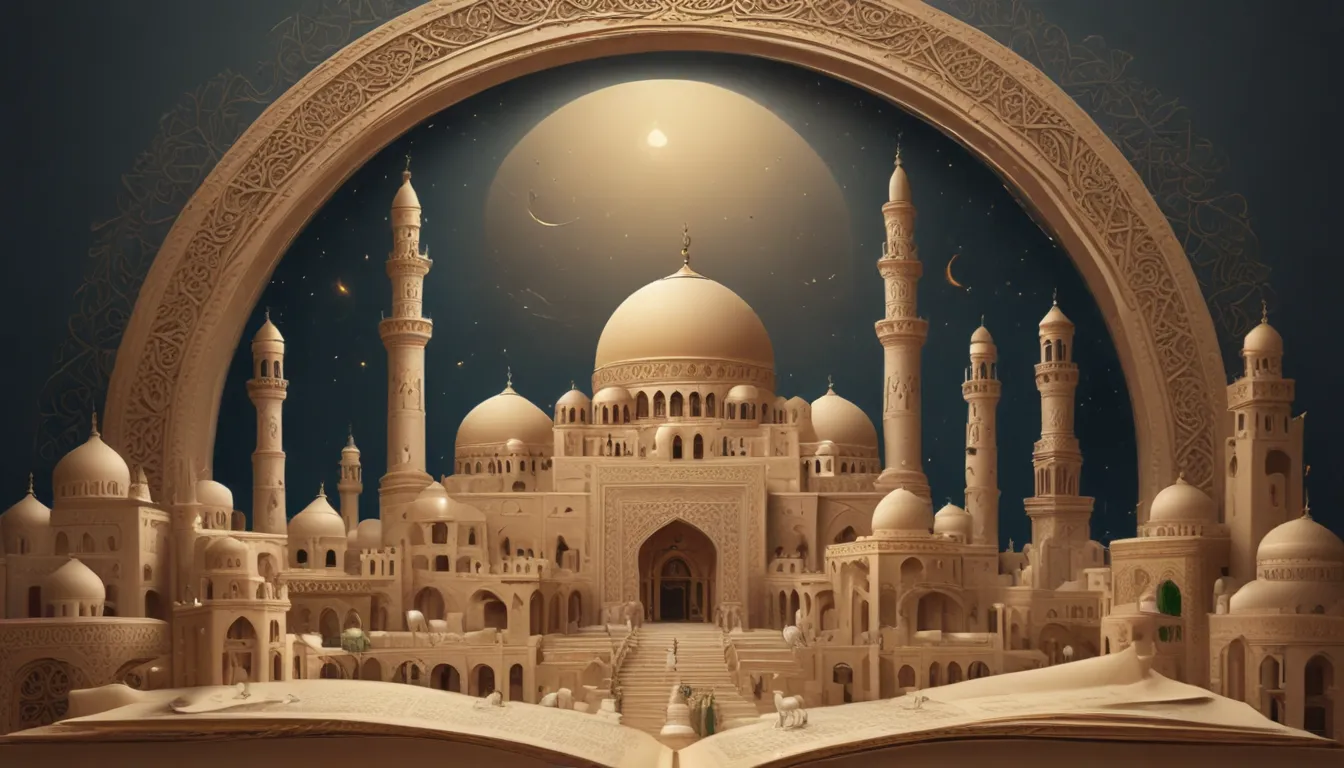The images in our articles may not match the content exactly. They are used to grab your attention, not to show the exact details in the text. The images complement the text but do not replace it.
Welcome to the enchanting world of the Arabic language, a linguistic treasure trove that beckons with a rich history, vibrant culture, and intricate nuances. With over 300 million speakers spread across the globe, Arabic stands as one of the most widely spoken languages, offering a gateway to a realm of mesmerizing tales and captivating traditions. Join us on this exploration as we delve into the origins, unique features, and cultural significance of Arabic, unveiling fascinating facts that will ignite your curiosity and deepen your understanding of this captivating language.
Origins: Tracing Back to Ancient Semitic Roots
Arabic finds its roots in the Semitic language family, alongside languages like Hebrew and Amharic. The earliest known written records of Arabic date back to the 4th century CE, reflecting a rich tapestry of linguistic evolution and cultural exchange that has shaped this language over millennia.
The Quran: A Pivotal Role in Linguistic Standardization
The Quran, the sacred text of Islam, is written in Arabic, playing a pivotal role in the preservation and standardization of the language. Classical Arabic, the formal language of religious texts, literature, and formal communication, owes much of its structure and elegance to the influence of the Quran.
The Arabian Peninsula: A Cradle of Linguistic Diversity
The Arabian Peninsula is hailed as the birthplace of the Arabic language, which spread across the region through trade, conquests, and cultural exchanges. This dissemination led to the development of various dialects and regional variations, enriching the linguistic landscape of Arabic.
The Intricate Arabic Script: A Cursive Marvel
The Arabic script, with its 28 letters, is written from right to left, showcasing a cursive style where letters are often connected to each other. This script embodies both beauty and functionality, serving as a hallmark of Arabic calligraphy and artistic expression.
Root-Based Language: Unraveling Linguistic Patterns
Arabic is a root-based language, where most words are derived from a three-letter root that conveys a basic meaning. By applying different patterns and vowels to these roots, a plethora of words can be formed, allowing for precise expression and rich vocabulary.
Language of Complexity: Grammar Unveiled
Arabic boasts a complex grammar system, characterized by intricate rules for verb conjugation, noun declension, and sentence structure. This linguistic complexity has fascinated scholars and linguists for centuries, highlighting the depth and sophistication of the Arabic language.
Calligraphy: Bridging Art and Language
Arabic calligraphy stands as a celebrated art form that transcends mere writing. From intricate designs to bold strokes, calligraphy adorns mosques, manuscripts, and various artistic expressions, showcasing the aesthetic beauty and cultural significance of the Arabic script.
Diglossia: Navigating Formality and Familiarity
Arabic exhibits diglossia, where Modern Standard Arabic (MSA) coexists with various regional dialects. While MSA is reserved for formal settings like media and literature, dialects are prevalent in everyday conversations, reflecting a dynamic linguistic landscape shaped by tradition and modernity.
Islamic Heritage: A Tapestry of Language and Faith
Arabic’s close association with Islamic culture is evident in its role as the language of the Quran, unifying Muslims worldwide regardless of their native tongues. This linguistic bond serves as a cornerstone of cultural identity and religious expression within the Islamic community.
Literary Legacy: Poets, Philosophers, and Scholars
Arabic boasts a rich literary tradition spanning centuries, with renowned poets, philosophers, and scholars shaping the cultural and intellectual landscape of the Arab world. Their works reflect the depth of Arabic language and the enduring power of storytelling and enlightenment.
Arabic Numerals: A Global Mathematical Influence
Arabic numerals, originating from ancient India and introduced to Europe by Arab mathematicians during the Middle Ages, have become a universal numerical system. These numerals, from 0 to 9, showcase the enduring legacy of Arabic scholars in shaping mathematical concepts and symbols.
Influence Beyond Borders: Language and Legacy
Arabic’s influence extends beyond its linguistic borders, shaping languages such as Spanish, Portuguese, and Swahili through vocabulary, grammar, and place names. The Arabic script has also left its mark on Persian, Urdu, and Pashto, highlighting a cultural exchange that transcends geographical boundaries.
Arabic Coffee Culture: A Symbol of Hospitality
Arabic coffee, known as “qahwa,” holds a special place in Arab culture, symbolizing hospitality and camaraderie. Served in small cups and accompanied by dates, this traditional beverage reflects the warmth and generosity inherent in Arab social customs.
Riddles, Proverbs, and Linguistic Charms
Arabic culture embraces a rich tradition of riddles and proverbs that challenge the mind with wit and wisdom. From hikayat (riddles) that tease the intellect to proverbs that offer cultural insights, Arabic language and culture thrive on linguistic charms and storytelling finesse.
Language Borrowings: A Tapestry of Shared Words
English has borrowed numerous words from Arabic, including “coffee,” “sugar,” “alcohol,” “magazine,” “cotton,” and “safari,” enriching the lexicon and reflecting a history of cultural exchange. These loanwords serve as linguistic bridges between Arabic and English-speaking societies, connecting diverse worlds through shared vocabulary.
Contributions to Mathematics: Al-Khwarizmi and Algebra
Arabic scholars, notably Al-Khwarizmi, made significant contributions to mathematics by introducing algebra and systematic methods for solving equations. Their pioneering work laid the foundation for modern mathematical concepts and algorithms, showcasing the intellectual prowess and innovation of Arab mathematicians.
Conclusion: Embracing the Beauty of Arabic Language
Arabic language embodies a tapestry of history, culture, and complexity that entices scholars, linguists, and enthusiasts alike. From its ancient roots to its diverse dialects, rich vocabulary, and captivating script, Arabic invites exploration and appreciation for its multifaceted beauty and endless possibilities for cultural connection and understanding.
Delving Deeper with Frequently Asked Questions (FAQs)
How many people speak Arabic?
Arabic is spoken by over 300 million people worldwide, making it one of the most widely spoken languages globally.
Is Arabic a difficult language to learn?
Arabic can be challenging due to its complex grammar, diverse dialects, and unique writing system. However, with dedication and practice, learning Arabic is a rewarding and achievable endeavor.
What are the different Arabic dialects?
Arabic dialects vary across regions, including Egyptian Arabic, Levantine Arabic, Gulf Arabic, and Maghrebi Arabic, each reflecting unique linguistic characteristics and cultural influences.
Is Modern Standard Arabic spoken in everyday conversations?
Modern Standard Arabic (MSA) is primarily used in formal settings like the media and literature, while regional dialects are more common in everyday conversations, reflecting the dynamic nature of Arabic language usage.
Are all Arabic-speaking countries culturally similar?
Although Arabic-speaking countries share a common language, their cultures, traditions, and customs may vary significantly based on historical backgrounds and geographical influences, showcasing the diversity within the Arab world.
Our Commitment to Quality and Authenticity
At Arabic Facts, our dedication to providing engaging and trustworthy content is paramount. Each fact presented on our site is contributed by real users like you, ensuring a diverse range of insights and information. Our team of editors rigorously reviews each submission to uphold the highest standards of accuracy and reliability, guaranteeing that the facts we share are not only fascinating but also credible. Trust in our commitment to quality and authenticity as you embark on a journey of discovery through the fascinating world of Arabic language and culture.
Embark on a journey of linguistic wonder and cultural exploration as you unravel the mysteries and marvels of Arabic language with Arabic Facts. Join us in celebrating the richness, diversity, and enduring legacy of Arabic language, a tapestry woven with history, tradition, and enchantment. Let the beauty of Arabic language ignite your curiosity and inspire your quest for knowledge and understanding in the captivating realm of Arabic culture and heritage.






